What We Treat
Find A Treatment
Diabetic Foot Care Ingrown Toenails Fungal Toenails Corns calluses Difficult Nails Plantar Warts Involuted Nails Heel Pain/Plantar Fasciitis Sever’s disease Knee, Leg, and Back pain Mucoid Cysts Morton’s Neuroma Bunions Athlete’s Feet Cracked Heels Flat Feet Achilles Tendinitis Ulcers/Wound care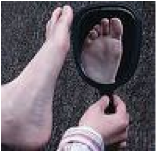
Diabetic Foot Care
It is very important for all diabetics to have their feet checked by a chiropodist on a regular basis. Diabetics can suffer with loss of circulation and sensations, and decreased resistance to infection. In severe cases, people with diabetes can be at risk for toe, foot, or leg amputation from a variety of foot complaints.
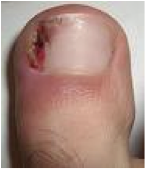
Ingrown Toenails
Usually affecting the large toe, however the lesser toes can be affected as well. It occurs when a splinter of the nail or the whole nails starts to grow into the flesh of the toe. This can become infected and painful. Ingrown toe nails can occur both acute; happening from trauma or improper nail cutting, and chronic; likely an ongoing problem.
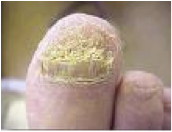
Fungal Toenails
Otherwise known as onychomycosis, is a very unsightly condition that can be hard to treat. The nail becomes infected by fungal spores and it can progress until it affects the nail root (matrix) causing the nail to grow thick. Fungal toe nails can appear with white or yellow patches or streaks in the nail, thick, crumbly, and sometimes has an odour.
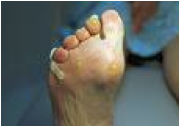
Corns
Corns are small, localized areas of thickened skin that develops into a core. Corns can become very painful from standing or tight fitting shoes. They can develop on top of the toes, on the soles of the feet, or in between the toes.

calluses
Callus is thickened and hard skin due to friction or pressure on the feet. They are commonly present over bony prominences on the feet, such as the ball of the foot or the heel. They appear yellowish in colour.
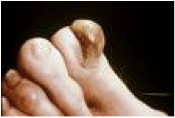
Difficult Nails
Nails may become thickened for many reasons ranging from trauma, infection, poor circulation, and aging. The nail can place immense pressure on the nail bed underneath from footwear and are difficult to cut on your own.
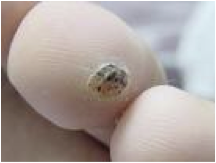
Plantar Warts
Plantar warts are very stubborn lesions caused by the Human Papilloma Virus (HPV). They are commonly appearing on the soles of the feet and on the toes. Warts can appear similar to corns and they are often mistaken for one another. Warts, otherwise known as veruccae, are usually asymptomatic (painless) however they are inclined to spread to other areas of the feet and the hands.
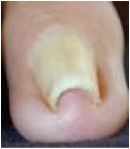
Involuted Nails
This is when the nail develops a curved or curling inward shape. The nail pinches the skin underneath and becomes painful from footwear or just the pressures from standing.
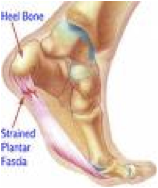
Heel Pain/Plantar Fasciitis
This is one of the most common complaints seen by a chiropodist. Most pain is localized to the heel area and tends to be worse first thing in the morning or after a period of rest. It is caused by inflammation from the overuse of the plantar fascia; a non-elastic band of tissue in the bottom of the foot. The fascia begins to tear off its insertion at the bottom of the heel bone. Spurs occur at the attachment of the fascia to the bone and are asymptomatic on their own, often being the result of plantar fasciitis.
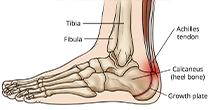
Sever’s disease
Otherwise known as apophysitis of the calcaneus, is an inflammation of the growth plate in the heel of growing children. The condition presents as pain in the heel and is caused by repetitive stress to the heel and is thus particularly common in active children.
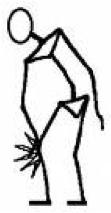
Knee, Leg, and Back pain
Your feet are the foundation of your body. If there is a problem with the alignment of your foundation then all the structures resting on your feet can pain because of them. Your foot structure may be the cause of aches your feel in your body.
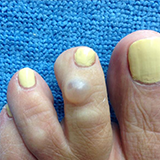
Mucoid Cysts
A digital mucous cyst is a common, benign lesion that presents as a firm nodule on the fingers or toes. The lesions are usually not painful and are found near the distal joints. ... This form contains a fluid that is found within the joint itself and can be related to trauma, arthritis, or can occur spontaneously.
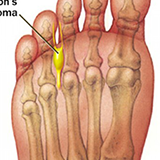
Morton’s Neuroma
Morton's neuroma is a painful condition that affects the ball of your foot, most commonly the area between your third and fourth toes. Morton's neuroma may feel as if you are standing on a pebble in your shoe or on a fold in your sock.
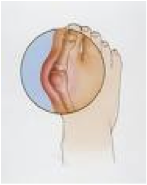
Bunions
A bunion is a bump on the side of the foot at the base of the big toe although they can occur at the base of the small toe as well (bunionette). These are caused by a displacement of the bones in the feet. Bunions are a very common and painful deformity. Poor fitting footwear and genetic factors cause bunions to develop. Corns, callus, ingrown toe nails, and arthritis can develop.
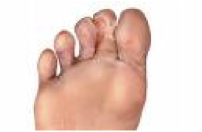
Athlete’s Feet
Athlete’s foot is a term given to a fungal infection of the skin; often occurring, but not limited to, between the toes. This can be itchy and appear red, swollen, and dry; but may also appear macerated (soggy).
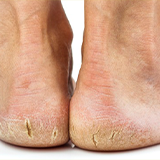
Cracked Heels
Cracked skin on the heels is commonly referred to as a fissure. The skin becomes hard and callused; it can split from pressure on the feet. When the fissures are deep they can cause bleeding and pain.
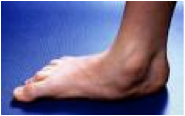
Flat Feet
Flat feet, or Pes Planus, occur in people who don’t have a normal arch in one or both of their feet. The middle of their foot can be in complete contact with the ground when they are standing and the foot rolls inward. This is often caused by genetics and can lead to many related problems if left untreated.
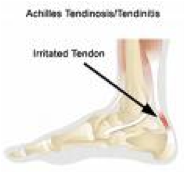
Achilles Tendinitis
The Achilles tendon is a continuation of the two calf muscles in the back of your leg and attaches into the back of the heel bone. This tendon can become inflamed and painful often brought on from injury or activity.
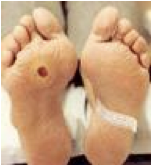
Ulcers/Wound care
This is a sore on the skin accompanied by the breakdown of surrounding tissue. This typically affects people with diabetes or circulation problems.
Did You Know?
During an average day of walking, the total forces on your feet can total hundreds of tons, equivalent to an average of a fully loaded cement truck.